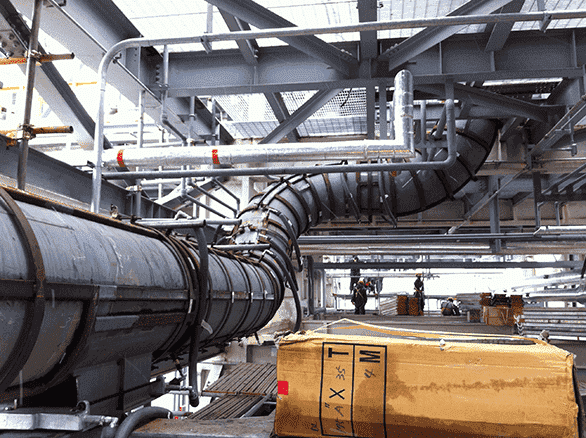In the industrial scenario, the search for energy efficiency is a constant. Every choice, no matter how small it is, plays a fundamental role in optimizing processes and ensuring superior results. Among the various options available, the use of steam as a heat source has gained prominence, especially when combined with the indirect heating method.
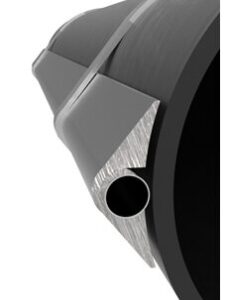
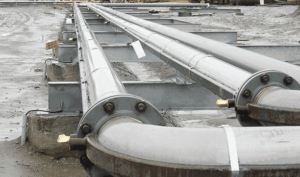
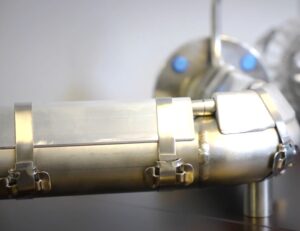
The Concept of Indirect Heating
Indirect heating in the steam trace (steam trace) refers to a method of transferring heat in industrial piping systems. In this process, heat is generated through circulating water vapor in a pipe facing the one that needs to be heated. Hot steam passes through steam trace (small diameter tubing) pre-installed next to the piping that requires heating.
The heat from the steam is transferred to the pipe through the pipe wall, thus heating the main piping (process piping). This method is known as indirect heating because the heat is generated in a separate piping and transferred to the process piping that requires heating.. This process is effective in maintaining the contents of the piping at a suitable temperature., preventing freezing
u keeping viscous fluids in a liquid state to facilitate flow.
The Advantage of Steam Heating
Steam trace steam heating offers several advantages compared to other heating methods. Some of the key advantages include:
- Energy Efficiency: A well-sized steam trace design ensures efficient heat distribution throughout the pipes, minimizing heat losses and ensuring more efficient use of energy.
- Control Accuracy: The vapor trace system allows precise temperature control throughout the entire pipeline, ensuring fluids are maintained at the desired temperature.
- Prevents freezing: It is effective in preventing liquids from freezing in pipes exposed to low temperatures, avoiding damage to equipment and ensuring continuity of operations.
- Viscosity Maintenance: It is ideal for maintaining the proper viscosity of fluids that can solidify at lower temperatures, ensuring a smooth and continuous flow of materials.
- Loss Reduction: Helps reduce production losses due to freezing or thickening of fluids, increasing operational efficiency.
- Versatile Installation: Can be installed on a variety of systems and equipment, making it versatile and adaptable to different industrial needs.
- Simplified Maintenance: Requires less maintenance compared to other heating methods, reducing costs and downtime.
- Operational Security: Steam trace steam heating is safe and reliable when installed and operated correctly, minimizing security risks.
- Cost Reduction: By optimizing the vapor trace, It is possible to minimize energy consumption, resulting in significant savings in long-term operating costs.
- Sustainability: Can be integrated into wider steam systems, contributing to more sustainable industrial practices by optimizing energy use.
These advantages make steam trace steam heating a popular choice in many industries., offering efficiency, reliability and cost savings in industrial operations.
Additional Advantages of Using Steam:
- Quick Heating: Steam allows for shorter heating times, resulting in greater process efficiency, an optimized design allows for precise temperature control and rapid response to temperature variations, ensuring fluids are maintained in optimal conditions at all times.
- Adaptability: An optimized design allows adaptation to changing operational needs, ensuring the vapor trace system can be adjusted as required, without large additional investments
- Durability: Suitable components and an optimized design increase the durability of the vapor trace system, reducing the need for frequent replacements and extending the life of equipment.
- Operational Security: A well-executed project considers security aspects, ensuring the vapor trace system is safe to operate, minimizing risks of failures and accidents.
- Compliance with Standards: An optimized design ensures that the vapor trace system complies with industry standards and regulations, avoiding legal problems and ensuring safe and legal operations.
- Sustainability: Steam trace system optimization contributes to sustainable industrial practices by minimizing energy waste, reducing the carbon footprint and promoting energy efficiency
Scooter: Leveraging the Potential of Steam
Na tayga, we recognize the central role of steam as an industrial source of heat. We combine the unique advantages of steam with our expertise in industrial heating and insulation to offer tailored solutions. From direct heating to indirect heating, Our commitment is to maximize process efficiency, boost productivity and deliver superior results.
Conclusion: Indirect Heating with Steam – A Smart Choice
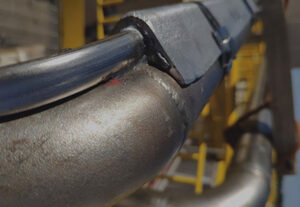
We want to invite you to explore more about our solutions and how we can optimize your industrial processes. Discover Tayga's High Performance Steam Dash, an approach that combines the power of steam with advanced technology for exceptional results.
We are ready to work side by side with you, understanding your needs and offering personalized solutions that drive your success. Contact us today and discover how Tayga's High Performance Vapor Trace (MHT) can make a difference in your industry. Together, We can heat the future efficiently, innovation and excellence.
 To learn more about Tayga's High Performance Vapor Trace solution, visit Our site (click here) or contact us via e-mail contato@taygahs.com or the number of phone and Whatsapp (21) 9.8819-3687.
To learn more about Tayga's High Performance Vapor Trace solution, visit Our site (click here) or contact us via e-mail contato@taygahs.com or the number of phone and Whatsapp (21) 9.8819-3687.
It will be a pleasure to get to know your industry and help with our customized energy efficiency solutions!
We also recommend reading our materials on the heating and insulation systems implemented by Tayga (just click and you will be redirected):


